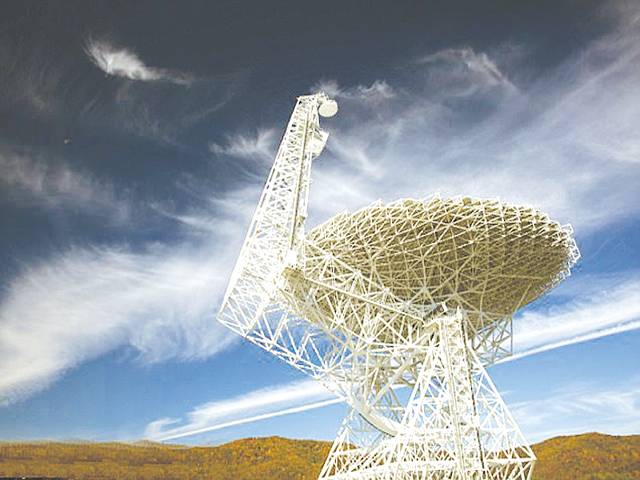LONDON-New research has identified a cradle of young stars 2.4 billion light years away as the source of mysterious fast radio bursts detected on Earth. These bursts - which each lasted just a few milliseconds - come from dense neutron stars just 20 kilometres (12 miles) across in the constellation Auriga.
Initially experts were baffled where these strange bursts of energy were coming from with some speculating it could be a sign of alien life trying to contact us.
However, researchers now believe the young stars are 6,200 light years from the centre of the small galaxy called FRB 121102. New research has identified a cradle of young stars 2.4 billion light years away as the source of mysterious fast radio bursts detected on Earth.
These bursts - which each lasted just a few milliseconds - come from dense neutron stars just 20 kilometres (12 miles) across in the constellation Auriga.
Initially experts were baffled where these strange bursts of energy were coming from with some speculating it could be a sign of alien life trying to contact us. However, researchers now believe the young stars are 6,200 light years from the centre of the small galaxy called FRB 121102. Researchers from the Netherlands Institute for Radio Astronomy in Dwingeloo have used the Hubble Space Telescope to study the small galaxy in detail never seen before.
‘The Hubble observations allow us to get a very sharp image’, researcher Shriharsh Tendulkar of McGill University in Montreal told New Scientist. ‘There is a very bright spot of star formation, and this FRB [fast radio burst] lies bang inside it.’
Scientists believe the nursery of stars lies on the edge of the galaxy, which has a diameter of around 20,000 light years.
The giant nursery is itself 4,400 light years across, astronomers believe.
Researchers believe these FRBs are caused by flares from the dense core of a young neutron star left behind when the mother star explodes. The waves were first detected by researchers from McGill University in Montreal, using the Green Bank Telescope in West Virginia, and at the Arecibo Observatory in Puerto Rico in December last year.
In their paper, published in The Astrophysical Journal, the researchers, led by Paul Scholz, wrote: ‘We have detected six additional radio bursts from this source: five with the Green Bank Telescope at 2 GHz, and one at 1.4 GHz with the Arecibo Observatory, for a total of 17 bursts from this source.’
The detection follows 11 previously recorded outbursts from the same location in the small FRB 121102 galaxy.
This is the only known repeater of fast radio bursts (FRBs) - radio emissions that appear temporarily and randomly.
The researchers added: ‘Whether FRB 121102 is a unique object in the currently known sample of FRBs, or all FRBs are capable of repeating, its characterisation is extremely important to understanding fast extragalactic radio transients.’






